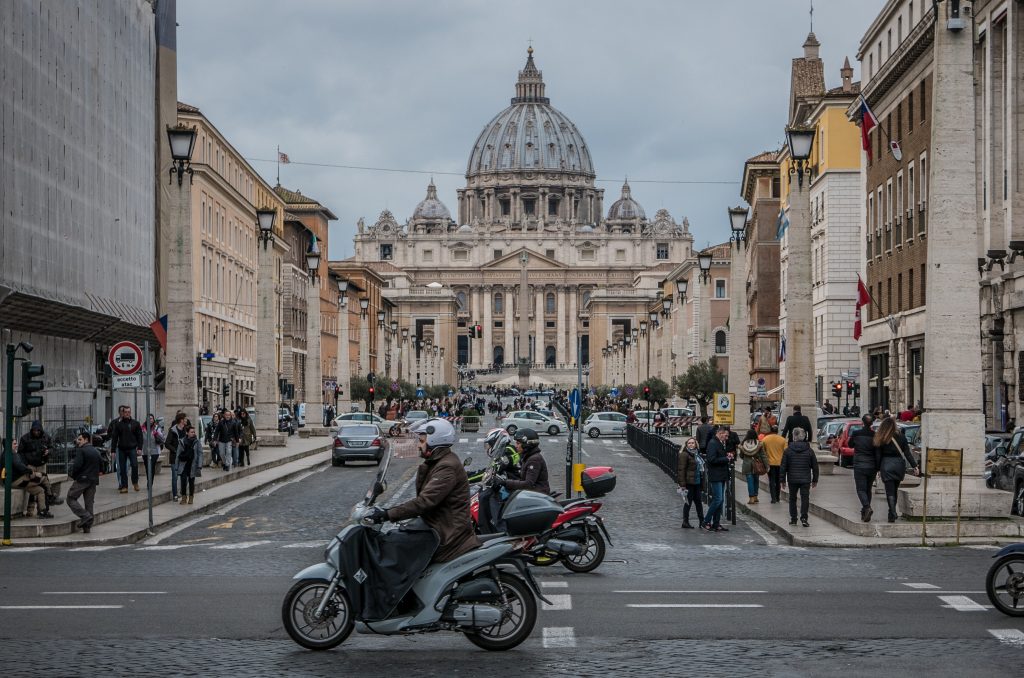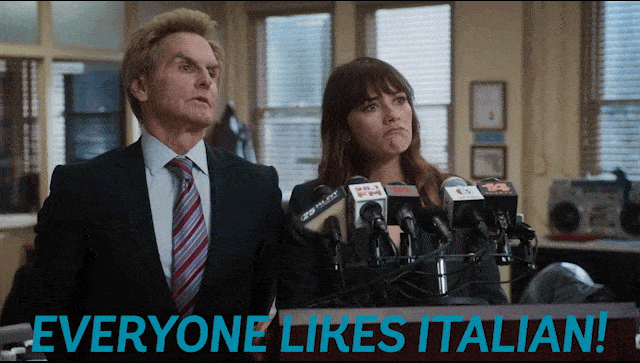Start brewing your cappuccino because today we will learn all the different ways to say good morning in Italian.
Learning expressions like these are imperative when traveling to foreign countries. You would never visit Italy without knowing how to say thank you in Italian, which is no different.
Let’s cut to the chase, the most common and widely heard way to say good morning in Italian is Buongiorno. Of course, there are other ways to greet people that are more appropriate for certain situations, be it status or time.
In this article, we will explore the different ways to say good morning in Italian and how and when to use them.
Rise and shine, let’s get started.

5 most common ways of saying good morning in Italian
-
Buongiorno
-
Giorno
-
Buongiorno, signore/signora
-
Cià
-
Buona mattinata

Buongiorno – Good Day
It’s been established that Buongiorno is the most common way to say good morning in Italian. This word is made up of “buon” and “giorno”, which literally means “good” and “day”. It’s a catch-all greeting to use in almost any situation be it formal or informal and as a response when someone wishes you a good morning or good day. The actual word-for-word translation for Good morning is Buon mattino but it is never used to greet people.
Generally, you can use these greetings up until noon or one o’clock in the afternoon however since its translation means good day some Italians use this as a greeting until about 5 or 6 pm and then switch to Buonasera which means Good evening.
Buongiorno, Marco. Come sta?
Good morning, Marco. How are you?
Buongiorno! Piacere di conoscerla.
Good morning, nice to meet you.
Giorno – Morning
Picture this, you’re on your way to a doctor’s appointment and running late. You pass by a good friend but have no time to stop and talk. Throwing out a casual Giorno would be the perfect way to greet them.
This is purely an abbreviation of Buongiorno just as English speakers abbreviate Good morning! to just Morning! Perfect for informal situations where you don’t have to make the effort to say the whole word.
Although Giorno means day, Italians tend to say it only in the morning.
It’s an informal expression so avoid using it when greeting people you are unfamiliar with or people who are on a senior level to you.
Giorno, Carlo. Che piacere riverderLa.
Morning, Carlo. What a pleasure to see you again.
Giorno Edward, hai guardato la partita di calcio ieri sera?
Morning Edward, did you watch the soccer last night?
Buongiorno, signore/signora – Good morning, Sir/ Madam
If you’re in a situation that requires a more formal disposition then this is the greeting for you. We’ve established that Buongiorno is the catch-all way to say good morning in Italian and this also applies to formal situations. You can definitely get away with just saying Buongiorno but to fully signal respect and formality, you just need to include the other person’s title and last name.
Make sure you choose the correct identifier as the Italian language is quite gendered much like Italian vs Spanish.
But what if there are multiple people you need to greet at once, for example at a business meeting? Easy! You could either say “Buongiorno signore e signori” which means “Good morning, ladies and gentlemen.” or you could say “Buongiorno a tutti.” which simply means “Good morning, everyone.”
Buongiorno, signora Russo, grazie per aver dedicato del tempo a me.
Good morning, Mrs Russo, thank you for making time for me.
Buon giorno Signore e signori. oggi parleremo delle relazioni annuali
Good morning, ladies and gentlemen. Today we will be discussing annual reports.
Buongiorno a tutti. grazie per esserti unito a me
Good morning, everyone. thank you for joining me
Cià (Ciao) – Hello
We can’t learn a language without learning its slang. Slang is an important part of a culture’s language. It has developed through generations with each generation being unique. Cià is the slang version of Ciao, which means Hello. You’re most likely familiar with this word as it has laid its roots worldwide with many non-native speakers adopting it as its own slang.
It is generally used among young people, it’s very informal and should only be used with close friends. Never use this expression in a professional context or with people you are unfamiliar with or those who are older than you. This expression also works as a way to say goodbye in Italian to a close friend be it over the phone or in person.
Cià Isabelle, come hai dormito la notte scorsa?
Hello Isabelle, how did you sleep last night?
Cià Nico, ci vediamo ancora oggi a pranzo?
Hello Nico, will we see you again today for lunch?
Buona mattinata – Good Morning
Buona means “good” and mattina means “morning”, Buona mattinata is the literal translation of good morning in Italian. So why isn’t it the most common way to say good morning in Italian? Firstly it is virtually never used as a greeting. even in normal speech the two words buona and mattina hardly ever appear together at all. There is also the masculine version which is buon mattino, but once again, not as a greeting.
The only time you likely hear mattina being used is when it’s being referred to as the duration of the morning.
We think it’s been emphasized enough that Buona mattinata is rarely heard on its own as a greeting however you can use it in the following way: “Ti auguro una buona mattinata!” which means “I wish you a good morning!”
Buona mattinata, ci vediamo dopo la scuola.
Have a nice morning, I’ll see you after school.
grazie per avermi incontrato così presto, ti auguro una buona mattinata.
Thank you for meeting me so early, have a good morning.

Time to start the day with good morning in Italian
Che Buono! You’ve made it through the article and have hopefully finished your cappuccino. It’s time to get out there and practice what you’ve learned before lunchtime. If you’re interested in learning, try your hand at learning how to say good morning in Spanish.
To recap, Buongiorno is the most common and widely heard way to say good morning in Italian and while Buona mattinata is the literal translation of good morning in Italian, it is not a common way to greet anyone. Also, take note of if the situation is formal or informal and react accordingly.
This is the season so after saying good morning make sure you can also wish loved ones a merry Christmas in Italian.
If you’re looking to pick up the pace of learning Italian, finding a private tutor is your best way forward.
AmazingTalker has thousands of professional private tutors at your disposal. Over 2 million students can’t be wrong.
Discover the answers to your language-related questions on AmazingTalker’s Q&A page.
















